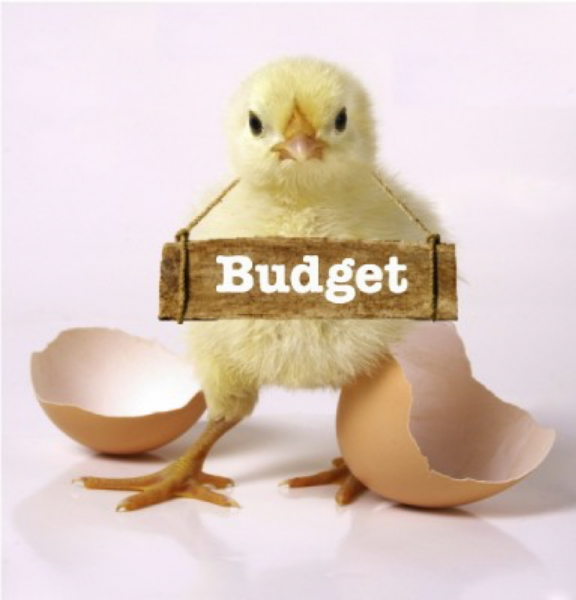
Advocacy Budget: Defining Your Bottom Line Will Save You Time and Money
Get ready, I’m about to crack advocacy budgets wide open (pun intended, and it won’t be the last). I know you’re on the edge of your seats, but this is really no chicken and the egg conundrum I’m about to solve for you. When you’re looking to develop an advocacy program, your budget should always come first. This may seem counterintuitive when you begin talking to consultants (like you’re tipping your hand and about to get taken for a ride), but it’s really important for a few reasons:
• Your description of your goals and the scope of the issue you’re tackling may sound like you’re planning to spend $500,000 when in reality you’ve only got $30,000 for your advocacy budget. The problem, in an eggshell (I’ll be here all week), is that if your consultant doesn’t have that information, they may build you an amazing budget that you can’t possibly execute because they’re taking a shot in the dark. Give them the information they need to build you an amazing $30,000 budget that actually fits your circumstances and is achievable.
• Let’s talk about time. For most of us, time is at a premium, and wasted time may mean lost votes, missed opportunities to sway decision-makers, or increasing costs (e.g. cost-per-point increases as you near an important collection point). Getting clear on the budget numbers with your team early on will reduce your back and forth (and who doesn’t love less email?!) and help you to finalize and budget so that you can get down to the brass tacks of implementing your program. It will also eliminate the frustration of opening up an email and seeing a figure that doesn’t make any sense for your budget.
• Budget size impacts the way the challenge you’re facing should be tackled. Some tactics only make sense at larger or smaller budget levels. Knowing your advocacy budget level as planning begins will help ensure that the tactics that are built into your budget make sense within the context of your particular circumstances.
• Goals and budget are also closely linked. As a consultant, I see part of my job as working with clients to refine their goals and to make sure they are achievable within the context of any given program. Understanding the likely budget allocation is a critical element to fulfilling that part of my role.
So, let’s return to the fear that sharing budget numbers evokes. It may feel like giving a consultant a hard budget number is like laying all your cards on the table, and that can be an uncomfortable position to be in. This is why it’s important to work with people that you trust, and why it’s important to do some research, both about the consultant and what they’re proposing to do (e.g. if someone suggests you buy an existing list of email addresses, you probably want to ask more questions, as that’s not a great use of anyone’s money). The world of advocacy is small— if you don’t have an existing relationship, chances are you know someone who knows someone who can provide some insight when it comes to a consultant’s methods and reputation.
The other important point here is that the budget number you give doesn’t have to be the end all be all in the program – it can change, or it can be a range. It may also be the case that you’re not sure what it will cost to achieve your goals and you’re trying to figure out what makes sense. If you’re talking to people you trust (and talking to enough people), you should be able to have those conversations openly. What’s really needed is a bottom line, a figure that you know you can (and likely will) spend on a particular project.
To sum up: Know your advocacy budget in advance and be able to bottom-line it. It will save you time and help you to create a better, more efficient advocacy program.
Want even more advocacy tips and tricks? Check out our list of the best advocacy and campaign tools.